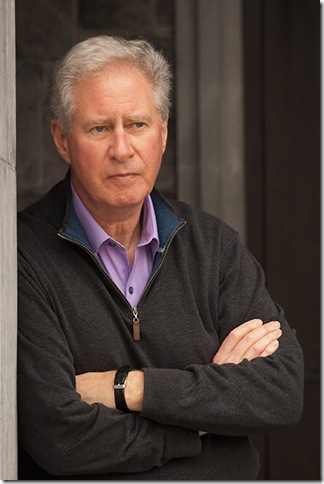Get ready: The Atlantic Classical Orchestra is coming.
After four well-attended rehearsals in the Eissey Campus Theatre at Palm Beach State College in Palm Beach Gardens, they will give four Tuesday afternoon concerts there next season. Well known for its creative programming, after 24 years of playing in Vero Beach, Fort Pierce and Stuart, the ACO feels its brand of music-making has appeal here.
The Atlantic is a very fine regional chamber orchestra of 47 players with a Scots-born conductor who is world class. Had Stewart Robertson lived in Britain, he’d have been knighted for his services to music after so many years leading the Glimmerglass and Florida Grand Opera companies. The Atlantic Classical Orchestra’s players are drawn from all over Florida: the Miami area to Boca, West Palm Beach to Orlando.
The musicians love the challenge of the new music and the offbeat choices out of the main stream of the three B’s (Bach, Beethoven and Brahms). The concert I heard March 6 at the Lyric Theatre in Stuart had pieces by Ravel, Debussy, Mahler and the contemporary American composer Jeffrey Parola, whose piece was getting a world premiere.
The opening work, Ravel’s Le Tombeau de Couperin was meant as an hommage to Baroque composer Francois Couperin. Alas, World War l intervened. Ravel put it aside to be an ambulance driver. First performed as a ballet in Paris, in 1920, he dedicated it to his fallen comrades. The orchestral version is in four movements: Prelude, Forlane, Menuet and Rigaduon. Robertson and the orchestra gave it a beautifully refined interpretation.
Next came the Debussy Première Rhapsodie for clarinet and orchestra, with Paul Green as soloist. With three music stands spread to hold all his music, he gave it a wonderful reading. This Debussy is short and sweet, intended as a sight-reading test for students at the Paris Conservatory where he ended up on the faculty. The first part is languid and slow; the second part, Scherzando, begins with some arabesques, typical of Debussy. A tune from the soloist is answered by the other wind instruments. Lively, piercing, long-held notes end the Rhapsodie.
Green gave this work a shimmering, lyrical account, then took the solo spot again for the world premiere of Parola’s new Concerto for Clarinet and Chamber Orchestra.
It opens with a few cheeky phrases, then a series of difficult runs. The clarinet tunes are eerily echoed by similar winds in the orchestra and at times, just the strings. A high, piercing E is held by the soloist for at least two bars, followed by rapid scales up and down the register. The strings busily accompany the next clarinet solo part, which goes very low with “forced” half notes, clearly distinctive, turning into longer fuller notes. The strings play single notes discordantly and from nowhere a bell joins in.
The orchestra builds up to the high E and from the solo clarinet we hear “raindrops”: random notes all over the tonic sol-fa, then clever pianissimo runs up and down the scale from Green. Cellos, double basses and violas begin a racy, exciting crescendo accompanied by the solo clarinet. A single bass drumbeat ends this passage. Quiet, reflective clarinet solos continue to the tune of a solo violin. It is very pleasant music; no serialism here.
Long, drawn-out notes from the soloist pitched a semitone higher than the orchestra are most effective. But they are interrupted by the “jealous” solo violin and nicely played chords from the harp. Three drawn-out notes from the violas open the next part as the soloist moves to a screeching climax. The clarinet plays continuous downward scales, then repeats them. Green’s last five solo notes end the piece with a single bass drum beat.
Green and Parola received wild acclaim and a standing ovation. What struck me most about this fine composition was the very clever string music that occasionally surfaces when the solo clarinet is catching his breath. The string music has a unique quality; Parola has a fresh way of writing for strings that was magical, and the ACO players gave of their best in playing them, too.
Now to Mahler’s First Symphony, the last item in the concert. Begun in 1885, Mahler continued revising it until 1906, a stretch of 21 years. Consequently, the overall impression is that it is “bitty.” A bit of melody here, a bit of a new tune there, all joined by brass fanfares to keep the audience interest. Even in the 2008 arrangement by Klaus Simon for chamber orchestra, it continues to wander for 50 minutes.
Mahler described his first movement as “Nature’s awakening from its long winter sleep.” A long-held chord in the string section is interrupted by the solo trumpet announcing one of his many arrivals. The clarinet does bird calls (supposedly cuckoos; Delius did them better). Cellos launch the Song of the Wayfarer, and the full orchestra picks it up and runs with it. Languid passages follow on the Horns, more bird calls, then it’s back to the Wayfarer and a hell-for-leather finish to movement number one.
“Under Full Sail” was Mahler’s title for the Scherzo, which opens with strings leading to a catchy tune, and the orchestra working hard to Robertson’s clean downbeat. A new lilting tune is introduced, a sort of slow waltz. The orchestra strings were at their best here, such perfection as they played like a singing chorus. At the end, though, questionable triple tonguing from the horns spoiled the beauty we just heard from the strings.
Third movement: a funeral march. Mahler was influenced by a painting called How the Animals Bury the Hunter. A very odd choice, and even stranger title. The orchestra’s wind section did themselves proud in this movement, but in the finale, there came the true test of Simon’s reduction.
Try as they may, the 47 Atlantic players could not sound like a big symphony orchestra of 80-plus, the size Mahler was used to conducting and for whom he scored this symphony. The ending, for example, did not sound robust enough for me; larger orchestral forces in this climactic, driving part of the music are needed, I honestly believe.
But it was a very brave effort, enthusiastically played by this wonderful band of players, ably led by Robertson, and it was met by thunderous bravos from all over the house.
The Atlantic Classical Orchestra closes its season April 1-4 with pianist Lindsay Garritson in Mendelssohn’s Piano Concerto No. 1. Also on the program is the Barber of Seville overture of Rossini and the Eroica Symphony (No. 3 in E-flat, Op. 55) of Beethoven. The free dress rehearsal is set for 2:15 p.m. Tuesday, April 1, at the Eissey Campus Theatre, Palm Beach Gardens. Call 772-460-0850 for more information, or visit www.atlanticclassicalorchestra.com.

